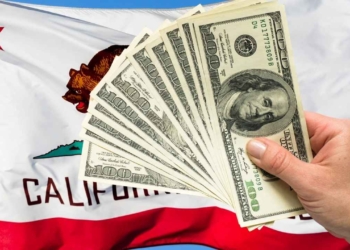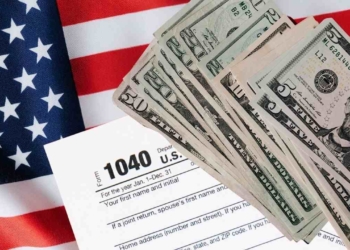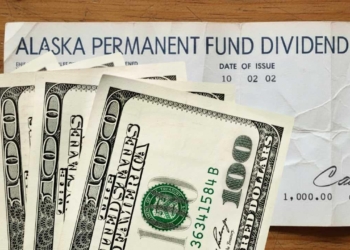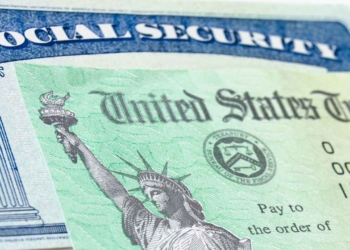As tax season approaches, it’s essential to start strategizing now to make the most of the new provisions introduced in the expansive tax and spending bill signed into law earlier this July. According to experts, proactive planning is key to maximizing the benefits.
While the exemption of taxes on tips and overtime, along with the $6,000 bonus deduction for seniors, has garnered significant attention, there’s a wealth of other opportunities to potentially transform your tax situation.
Standard Deduction Just Got More Powerful: Here’s What Taxpayers Need to Know for 2026
“Everyday taxpayers who received the standard deduction had no tax planning opportunities under the 2017 TCJA (Tax Cuts and Jobs Act),” explained Brian Gray, a certified public accountant and tax partner at Gursey Schneider. Fortunately, the landscape has changed, offering numerous opportunities for tax planning.
The OBBB has permanently reinstated the charitable contributions deduction for those opting for the standard deduction, starting in 2026. This change marks a significant shift, allowing more taxpayers to benefit from contributing to their favorite causes without the need to itemize.
In the midst of the 2020 pandemic, the CARES Act introduced a temporary benefit allowing individuals who opted for the standard deduction to claim up to $300 for cash donations. This provision was notably expanded in 2021, permitting married couples filing jointly to deduct up to $600, before eventually expiring.
Maximize Your Year-End Charitable Deductions
| Provision | Effective | Amount / Benefit |
|---|---|---|
| Senior deduction | 2025–2028 | $6,000 individual / $12,000 joint |
| Tips & overtime deduction | 2025–2028 | Up to $25,000 each |
| Auto loan interest | 2025–2028 | Up to $10,000 |
| Charitable deduction (non-itemizers) | From 2026 | $1,000 individual / $2,000 joint |
| Dependent Care FSA | From 2025 | $7,500 limit |
| Child & Dependent Care Credit | From 2026 | 50% credit up to $6,000 |
According to Gray, under the OBBB initiative, taking advantage of “year-end charitable deduction planning” could be highly advantageous. Individuals have the opportunity to deduct $1,000 per person, or $2,000 per couple, through above-the-line charitable contribution deductions, even if they are unable to itemize.
Above-the-line deductions are particularly beneficial as they can be claimed without itemizing. They play a crucial role in reducing your adjusted gross income (AGI), which in turn decreases your overall tax liability. Additionally, lowering your AGI may enhance your eligibility for other valuable deductions or tax credits.
New Opportunities for Auto Loan Interest Deductions
For the first time, thanks to the OBBB, interest on personal auto loans has become deductible for non-itemizers. Brian Schultz, a certified public accountant at Plante Moran Wealth Management’s tax practice, highlights this unprecedented change. This new deduction offers a significant financial advantage, making it an essential consideration for those looking to optimize their tax strategies.
Once upon a time, the deduction of interest on personal auto loans was a reality, but it was only available as an itemized deduction until the significant changes brought by the Tax Reform Act of 1986, which removed it altogether.
With the introduction of the Opportunity, Benefits, and Betterment Bill (OBBB), Americans will soon have a new chance to deduct up to $10,000 of interest on their taxes. This opportunity spans from 2025 through 2028, offering a fresh perspective for many taxpayers.
Eligibility Requirements
However, it’s essential to note that there are specific requirements to qualify for this deduction, which could present challenges for some. For instance:
- The vehicle purchase must be a new, U.S.-assembled car specifically for personal use.
- Income limitations also apply, potentially affecting eligibility.
Despite these hurdles, if you find a car that meets these criteria and you qualify for the deduction, this could significantly alter your decision-making process when considering whether to buy or lease a vehicle. As Schultz points out, understanding these factors could impact how you calculate costs.
More Benefits for Families
Families should be aware of additional benefits, even if they opt for the standard deduction, according to Schultz.
Maximizing Dependent Care Benefits
If your employer offers a Dependent Care Flexible Spending Account (DCFSA), you can benefit from funds that are withdrawn from your paycheck before taxes are deducted. These funds can typically be used for the care of a child or an adult unable to care for themselves.
- The OBBB permanently raises the annual maximum contribution to $7,500 (or $3,750 for married couples filing separately), up from the previous $5,000.
- This increase begins next year, although enrollment in these plans will start soon in 2025, as Schultz mentioned.
Understanding these changes and how they affect your financial planning can provide significant advantages for many individuals and families.
In the wake of the COVID-19 pandemic, there was a notable but temporary increase in the contribution limits, which rose to $10,500 (or $5,250 for married individuals filing separately) in 2021, thanks to the American Rescue Plan Act. However, until then, the contribution level had been stagnant at $5,000 for an impressive 40 years, as noted by the insurance brokerage Newfront.
A Significant Boost for the Child and Dependent Care Credit (CDCC)
Exciting changes are on the horizon for the Child and Dependent Care Credit (CDCC), with a substantial dual enhancement set to commence in 2026, according to Schultz.
Increased Credit Rate
Firstly, families with the lowest incomes will benefit from an increased credit rate, jumping to 50% from the previous 35% of qualifying expenses. This applies up to $3,000 for one child and up to $6,000 for two or more children. It’s important to note that the percentage will gradually decrease as income levels rise.
Modified Income Thresholds
Secondly, the income threshold for receiving the lowest 20% credit has been adjusted. For married couples filing jointly, this threshold has soared to $206,000, while for individuals, it has increased to $103,000. These figures represent a significant rise from the previous pre-OBBB income levels of $86,000 and $43,000, respectively.
The recent changes are set to benefit almost 4 million families, providing them with an increased tax credit, as highlighted by the First Five Years Fund. This nonprofit organization is dedicated to ensuring that families have affordable access to quality child care and early learning programs.
Boost in Tax Credits for Families
According to Sarah Rittling, the executive director of the First Five Years Fund, families with two young children who earn less than $150,000 annually currently receive roughly $1,200 under the existing law. “With the enhancements, this benefit would see a $900 boost,” she stated following the congressional approval of the OBBB. This increase can significantly aid parents in managing their tight budgets.
With a bit of strategic planning, Americans could potentially secure a larger credit, as advised by Schultz. For instance, by increasing your 401(k) contributions, you can lower your taxable income, which might enable you to qualify for a higher CDCC by 2026.
Schultz also emphasized the importance of being aware of the new changes related to income phaseouts. “Be mindful of income levels,” he advised, as these changes can significantly impact the tax credits families are eligible for.
Source:







